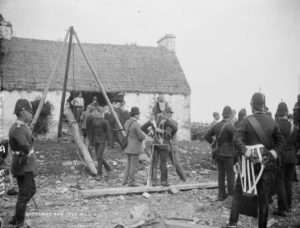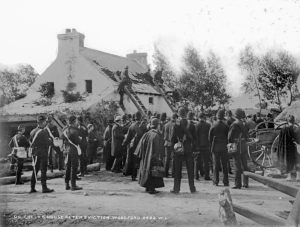By Jim Lynch
Photography was invented by Louis Daguerre in Paris in 1839 and spread rapidly throughout Europe and America. The first commercial studio appeared in Dublin in 1841. The Daguerreotype process was cumbersome and expensive and was available only to wealthy producers and purchasers. Those early years tend to show people and places of the upper social classes. There are few surviving Irish photographs dating from the 1840s. There are no photographs known to exist of the Irish Potato Famine of 1845-1849.
The invention of the photographic wet-collodion process in 1851 shortened exposure time from several minutes to a few seconds and allowed production of an unlimited number of high-quality prints. The numbers of photographs produced grew through the 1850’s. The bulk of the most valuable and historically informative photographs date from the 1860s on. By 1865 there were 24 photographic studios in central Dublin. These studios specialized in portraits of individual, families, idealized landscapes and city scenes.
The widespread discovery and adoption of the dry glass plate negative in the 1871 considerably streamlined the still cumbersome photographic process. It made it more affordable and allowed photographers to travel light, unencumbered by transportable darkrooms. It allowed the photographer to capture current events. Some of the most striking scenes of this time period relate to the Land Wars beginning in 1878 and the resulting landlord tenant evictions of the 1880s.


